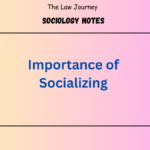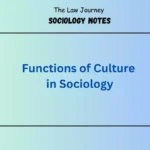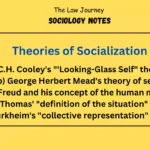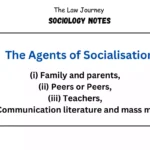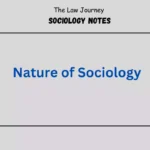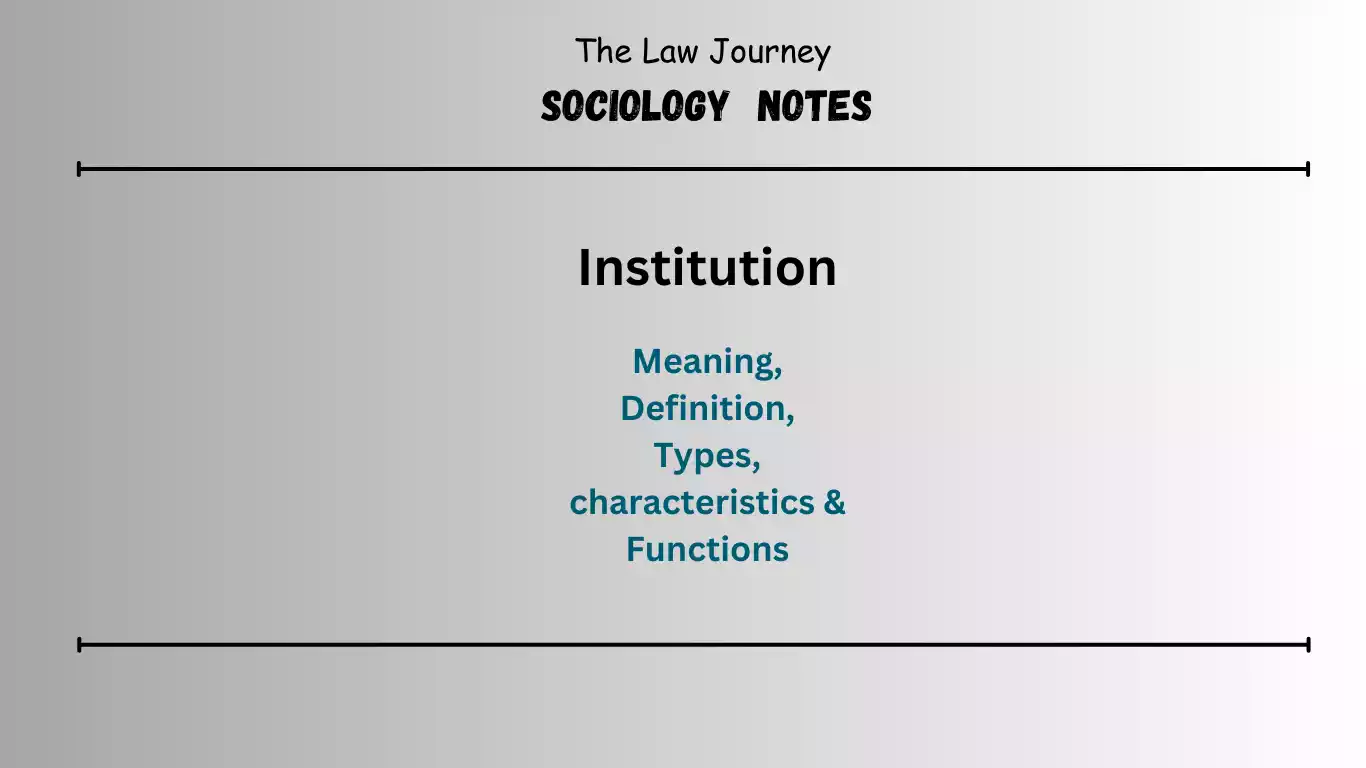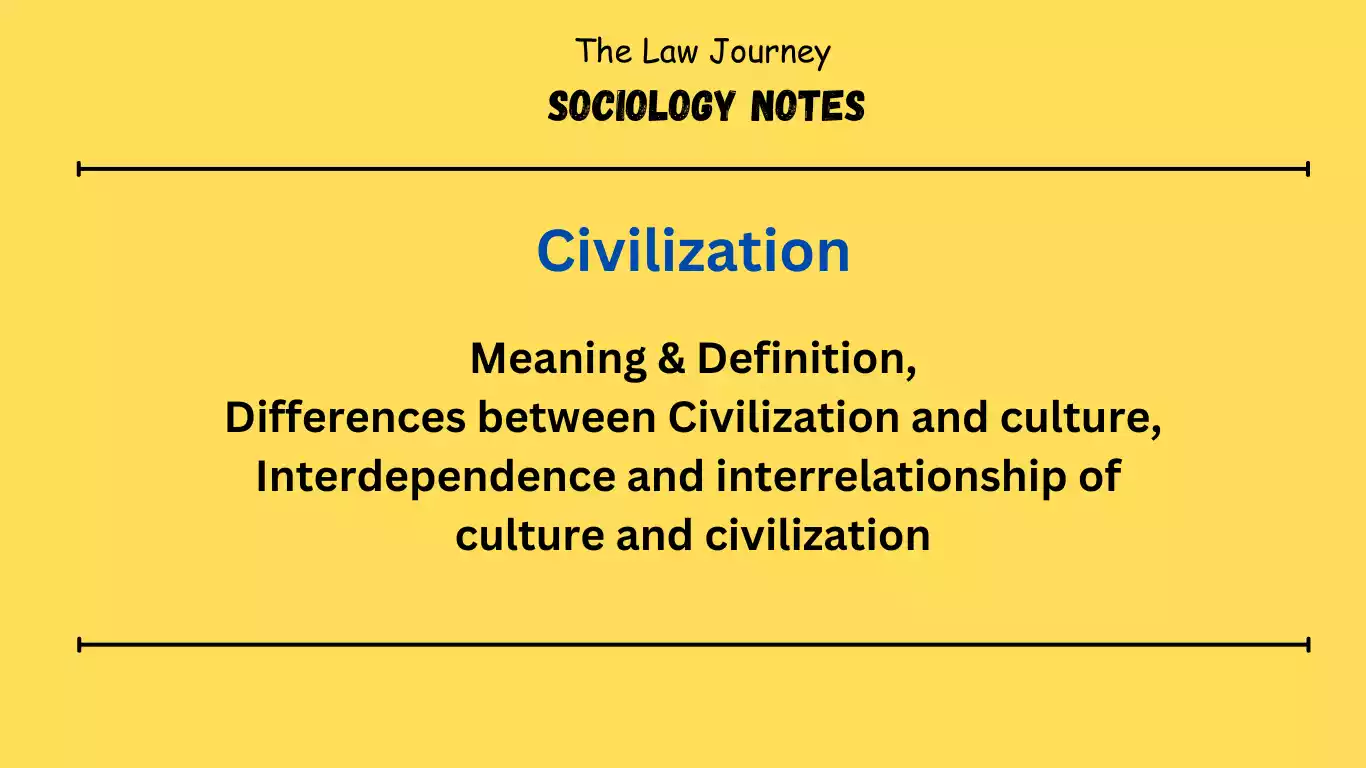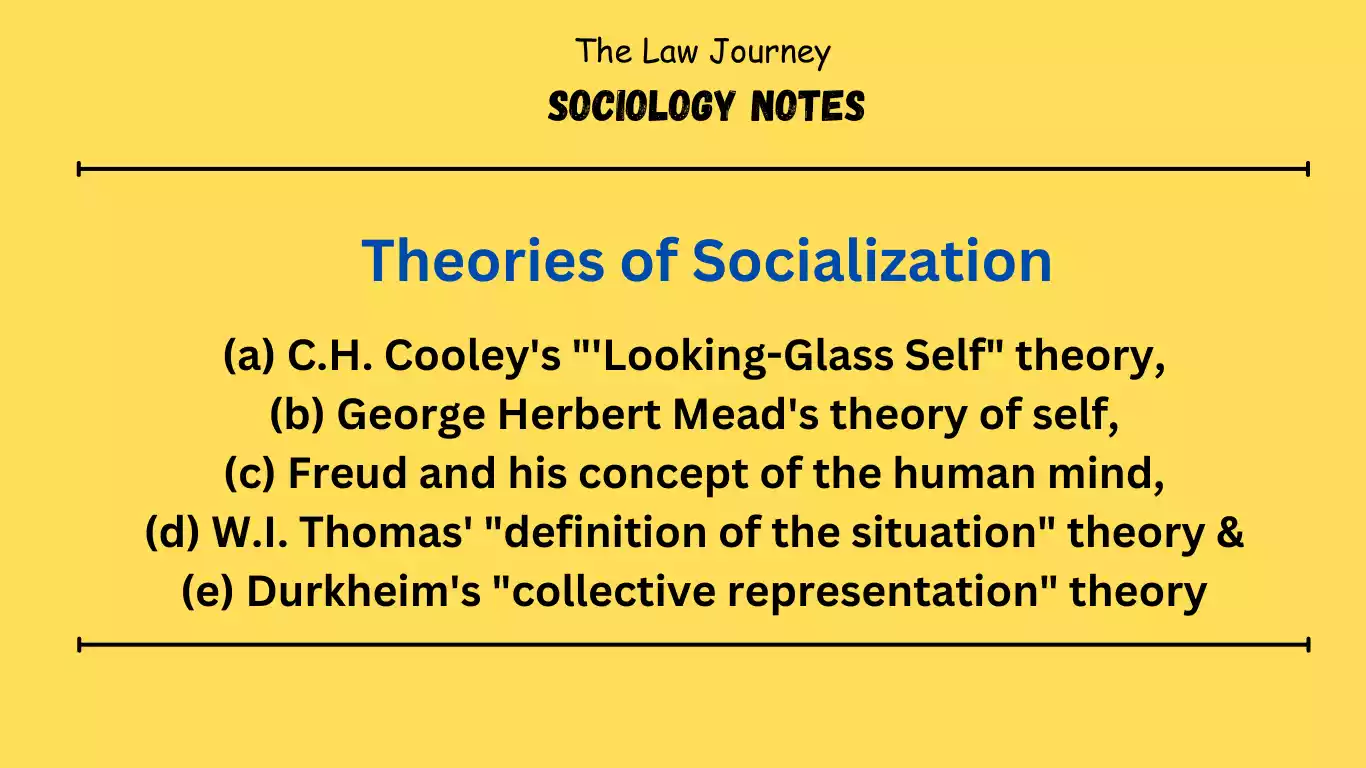The concept of institutions is one of the most important in the entire field of sociology. Unfortunately, this is a concept that is not used consistently by sociologists. The importance of understanding the concept of institutions for understanding society is simultaneously recognized by all sociologists. In fact, Durkheim went so far as to define sociology as the science of social institutions. Sumner and Keller state: “The civil road is to a society what a cell is to an organism; institutions are its framework and its problems.” We believe that it is. ”
The term “institution” has been interpreted in various ways. Some sociologists also use it loosely. Comment for this: Harry M. Johnson writes: “…Lay people and sociologists alike often speak of schools, churches, business organizations, prisons, etc. as institutions of the community. Such usage is so common that it would be foolish to condemn it. .”
Definitions
(1) Ginsberg. Institutions “may be described as recognised and established usages governing the relations between individuals and groups”.
(2) MacIver and Page. Institutions may be defined as the “established forms or conditions of procedure characteristic of group activity”.
13) Kingsley Davis. Institution can be defined as “a set of interwoven folkways, mores, and laws built around one or more functions”
(4) H.E. Barnes. Institutions represent “the social structure and the machinery through which human society organises, directs and executes the multifarious activities required to satisfy human needs”
(5) C.A. Ellwood. Institutions may be defined as “the habitual ways of living together which have been sanctioned, systematized and established by the authority of communities”.
Characteristics of social institutions
The main characteristics of social institutions can be explained here.
(1) Social in Nature. Institutions are created through the collective activities of people. They are naturally sociable. After all, institutions are the product of individuals’ mundane and recurrent social relationships.
(2) Universality. Social institutions exist everywhere. They exist in every society and at every stage of social development. Basic institutions such as family, religion, property, and some political systems are also found in tribal and primitive societies.
(3) Institutions are standardized norms. Institution refers to standardized procedures and norms. They direct the steps. It also specifies the rules and regulations that must be followed. For example, marriage is an institution that regulates the relationship between a man and a woman. Similarly, schools and universities have their own rules and procedures.
(4) Institutions as a means of meeting needs. Institutions are established by men themselves. They help meet basic and important human needs.
These basic needs are (1) the need for self-preservation, (2) the need for self-preservation, and (3) the need for self-expression. (5) Institutions are control mechanisms. Institutions such as religion, morality, state, government, law, and law control men’s behavior. These mechanisms maintain social order and provide stability. Institutions are like wheels that move human society toward desired goals.
(6) Relatively permanent. Organizations are typically not exposed to sudden or rapid changes. Change happens slowly and gradually. Many organizations are rigid and permanent. Over time, they become conservative elements of society. Examples: caste, religion, etc. But it can also be changed by situational pressures.
(7) Abstract in nature. Institutions are not external, visible, concrete things. they are abstract. Therefore, marriage cannot be kept in a museum and religion cannot be evaluated or quantified. You cannot weigh wars or apply laws to things like laboratory experiments.
(8) Oral and written traditions. Institutions may persist in the form of oral and/or written traditions. In primitive societies, they may be primarily oral. However, in modern complex societies they are observed in both written and unwritten forms. There may be written institutional forms, such as constitutions, sacred texts, curricula, government orders, business contracts, and examination systems, related to political, religious, educational, and economic institutions.
(9) Combine symbols. Institutions can have their own tangible or intangible symbols. For example: A state may have a national flag emblem and national anthem as symbols, and a religion may have its own symbols such as a cross, crescent, star, or swastika. Schools may have their own flags and school prayers, marriages may have their own wedding rings, Mangala Sutras, etc.
(10) Institutions are interconnected. Although the institutions are different, they are interconnected. To understand one institution, you must understand other related institutions. religious and moral. Educational, political, economic, and other types of institutions are inherently interconnected.
Types of Institution
Primary and secondary institutions
institutions are often classified as (i) primary institutions and (ii) secondary institutions. The most basic institutions found even in primitive societies, such as religion, family, marriage, property, and certain political institutions, are primary in nature. As societies grew in size and complexity, institutions became more sophisticated and differentiated.
Therefore, many institutions have evolved to serve people’s secondary needs. They can be called secondary institutions. Examples: education, exams, law, legislation, constitution, parliamentary procedure, economy, food.
Sumner distinguishes between cresive and enactment institutions. That which develops or develops naturally, unconsciously, and even spontaneously is called by him cresib. He describes institutions that are consciously, purposefully, and according to a plan as “instituted.” Crescive institutions are similar to primary institutions, while enacted institutions are similar to secondary institutions.
Functions of social institutions
Institutions are of great functional importance. Their main features are:
(1) The Institutions aims to meet a need. Institutions contribute to the fulfillment of basic human needs such as (i) self-preservation, (ii) maintenance, and (iii) self-expression. Specify and prescribe the means and methods for achieving them.
(2) Institutions control human behavior. Institutions organize and regulate systems of social behavior. Through institutions, people’s unexpected, spontaneous, and irregular behavior is replaced by expected, structured, systematic, regular, and predictable behavior.
In this way, the interpersonal relationships of individuals are regulated by institutions. Make it clear to your members what is and isn’t allowed. What is desirable and what is not desirable! This is especially true for state institutions.
(3) Institutions simplify individual behavior. Institutions prescribe specific behaviors to meet our basic needs, thus saving us a lot of energy and time. They avoid chaos and uncertainty and contribute to social systems and order.
(4) Institutions assign roles and status to individuals. The institutionalization of social behavior consists in the establishment of certain norms. These norms assign status positions and role functions in relation to such behaviors. Systems such as family, marriage, education, property, division of labor, caste, religion, etc. It gives a certain social status to the people involved.
(5) Institutions contribute to unity and uniformity. The institutions that regulate relationships between individuals are largely responsible for the unity and homogeneity of society.
(6) Apparent functions of the institution. Every institution has two types of obvious features. (i) pursuing goals or interests, and (ii) maintaining internal cohesion so that the organization can survive. For example, a state must serve its people and protect its borders. At the same time, the state must avoid the dangers of internal revolution and external conquest.
(7) Negative features of the system. Institutions can also have detrimental effects. Even if the situation requires change, it cannot be done easily and quickly. Being too conservative slows progress. They can even hinder people’s personal growth. Here we can give an example of how religion and caste often hinder people’s success and adventure.
Associations and Institutions – Differences
The terms “association” and “institution” are often used by people to mean exactly the same thing. However, the difference between the two terms is very important in sociology. When humans form associations, they must also create institutions to satisfy their desires. Men form associations to satisfy their wants and needs. However, these needs are met by educational institutions.
Each association has its own organization. For example, the family as a collective includes institutions such as marriage, property system, inheritance system, home, and family dinner. States, as associations, can have institutions such as governments, legislative processes, and parliaments. An Institutions cannot exist without a association. Facilities can be established by both communities and associations. The following table shows the difference between an association and an institution.
Related Post
- Concept of Social Groups in Sociology
- Moot Proposition Maker
- RTI notes
- Political Notes
- Legal History Notes
- Law of Torts notes
- law project maker
- moot court memorial maker
what is Institution ?
According to MacIver and Page. Institutions may be defined as the “established forms or conditions of procedure characteristic of group activity”.
Characteristics of the institution ?
(1) Social in Nature. Institutions are created through the collective activities of people. They are naturally sociable. After all, institutions are the product of individuals’ mundane and recurrent social relationships.
(2) Universality. Social institutions exist everywhere. They exist in every society and at every stage of social development. Basic institutions such as family, religion, property, and some political systems are also found in tribal and primitive societies……
Reference Books
- C.N. Shankar Rao – Principle of sociology with an introduction to social thoughts
- Introduction to Sociology by Anthony Giddens
- A Dictionary of Sociology by John Scott
- Sociological Theory by George Ritzer
- Handbook of Indian Sociology by Veena Das
- Social Change in Modern India by M N Srinivas







